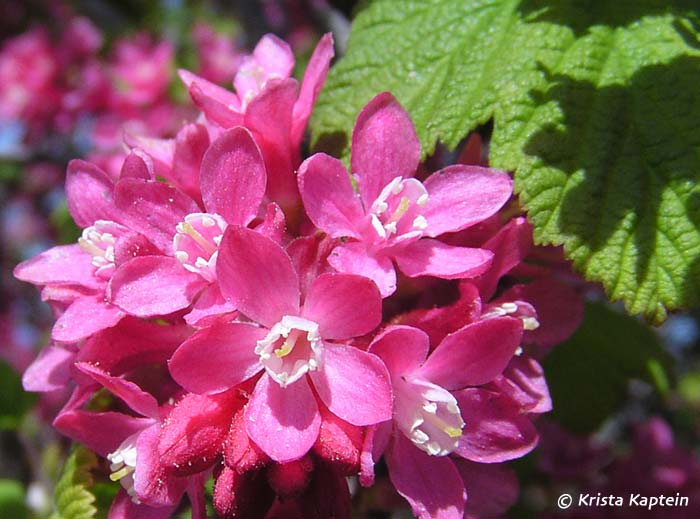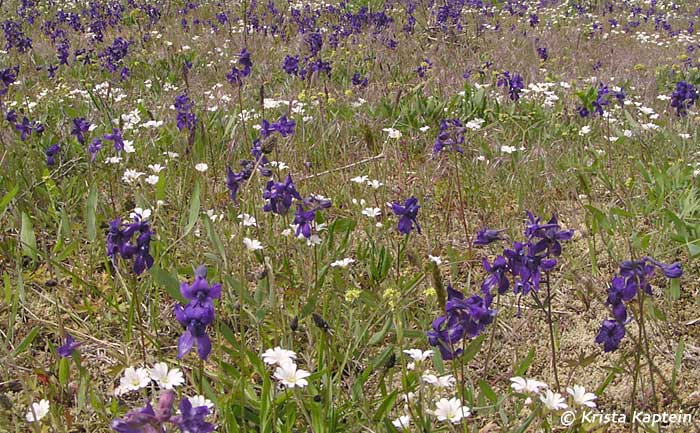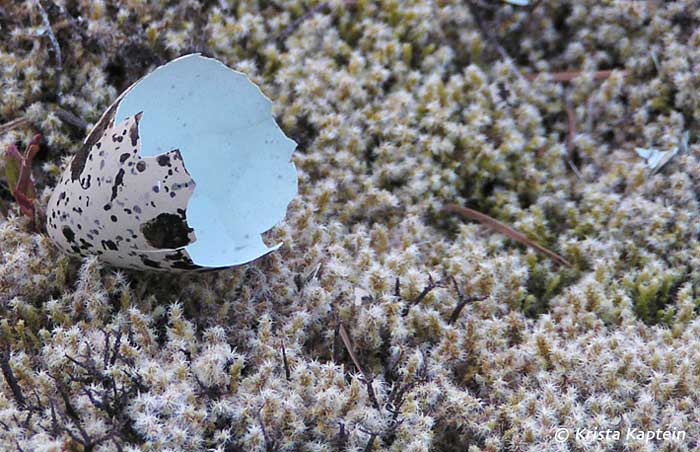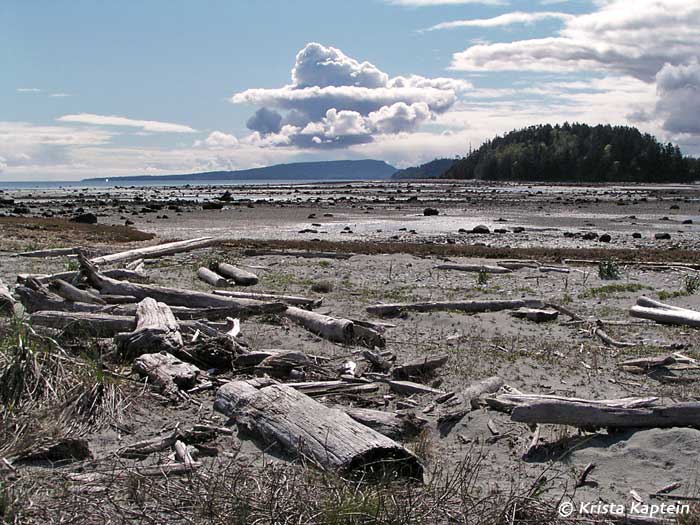When is an island not an island? When you can walk to it – at low tide! You won’t find the name Tree Island on many maps – but ask someone from the Comox Valley, and they will refer you to Sandy Island – the Marine Provincial Park so close to the northern tip of Denman Island that you can walk over at low tide.
Sandy Island Marine Provincial Park actually includes other small islands called the Seal Islets, all surrounded by white sand beaches and shell middens. Sandy Island itself is about 33 ha. The entire park is about 118 ha – the size varies with the tide levels!
About 8000 or 9000 years ago, this sandy archipelago was connected to Willemar Bluffs on the Comox Peninsula. The bank of dunes, formed a ‘super-estuary’ between Denman and Vancouver Island. The waters are now known as Comox Bay & Baynes Sound, and the submerged sandbar that remains, the Comox Bar, is still tricky to navigate at low tide.
At the centre of sandy Tree Island, a stand of Douglas fir hosts an active bald eagle nest, as well as forest birds such as nuthatches, chickadee, towhee, and Pacific slope flycatchers, orange-crowned warbler, and yellow-rumped warbler in spring.
Meadows on Sandy Island
The meadows’ colours of pink, purple, yellow, and white present different flowers as spring progress. In April, those blossom colours are red-flowering currant, blue-eyed Mary, goldstar and woodland star. Near the northern end of Tree Island, a prominent red-flowering currant is actually visible from Union Bay across Baynes Sound.
By May, the meadows are seablush accompanied by larkspur, Indian consumption plant and chickweed. The southern meadows of the island are predominantly pink with sea-blush, while the northern meadows are mostly purple with larkspur. The white flowers of miner’s lettuce alternate as accents with the yellow flowers of Oregon grape and field mustard. A scattering of chocolate lilies, with their own yellow highlights, grow in the woods.
Birding on Sandy Island
Notable for birders are the multitude of seabirds that congregate here, during migration but also year-round: Brant geese, scoters, herons, loons, harlequin, shorebirds of all kinds. In May, the call of killdeer is constant in the meadows. Their oval eggs on the ground would be virtually invisible if not for the occasional broken shell revealing the blue interior. A smaller plover among the killdeer in the mudflats is a semi-palmated sandpiper. Among the numerous gulls, migrating Caspian terns stand out visibly and audibly, with their large orange bills and raucous calls.
Meadow birds include golden-crowned & savannah sparrows. White-crowned sparrows sing repeatedly from every bush – interestingly, in a slightly different ‘dialect’ than those in the Comox Valley! A few black-tailed deer browse the perimeter of the meadows. The lower branches of shrubs have been cleared to a noticeable demarcation height. More elusive animals such as otter leave only footprints in the sand.
While not always an island, Tree Island is always both treed and sandy – a sensitive ecosystem of rare and fragile plants and animals.
Need to Know:
- Tree Island is accessible by foot at tides lower than 2.5 m. Public access is from the end of Gladstone Way on Denman. Hike 2.8 km along the shore north to Longbeak Point, then another 1 km across the sand flats to Tree Island. The nearest boat launch is from Union Bay 4.5 km to the south-west.
- There is no fresh water on the island, and fires are prohibited.
- Because of its proximity to CFB Comox, you may find smoke canisters from military exercises – these should not be disturbed but reported to 250-339-8211.
About the Contributor:
Krista Kaptein is an intermittent hiker, naturalist, writer, & photographer based in the Comox Valley, Vancouver Island, British Columbia. More of her interests are on her blog.







